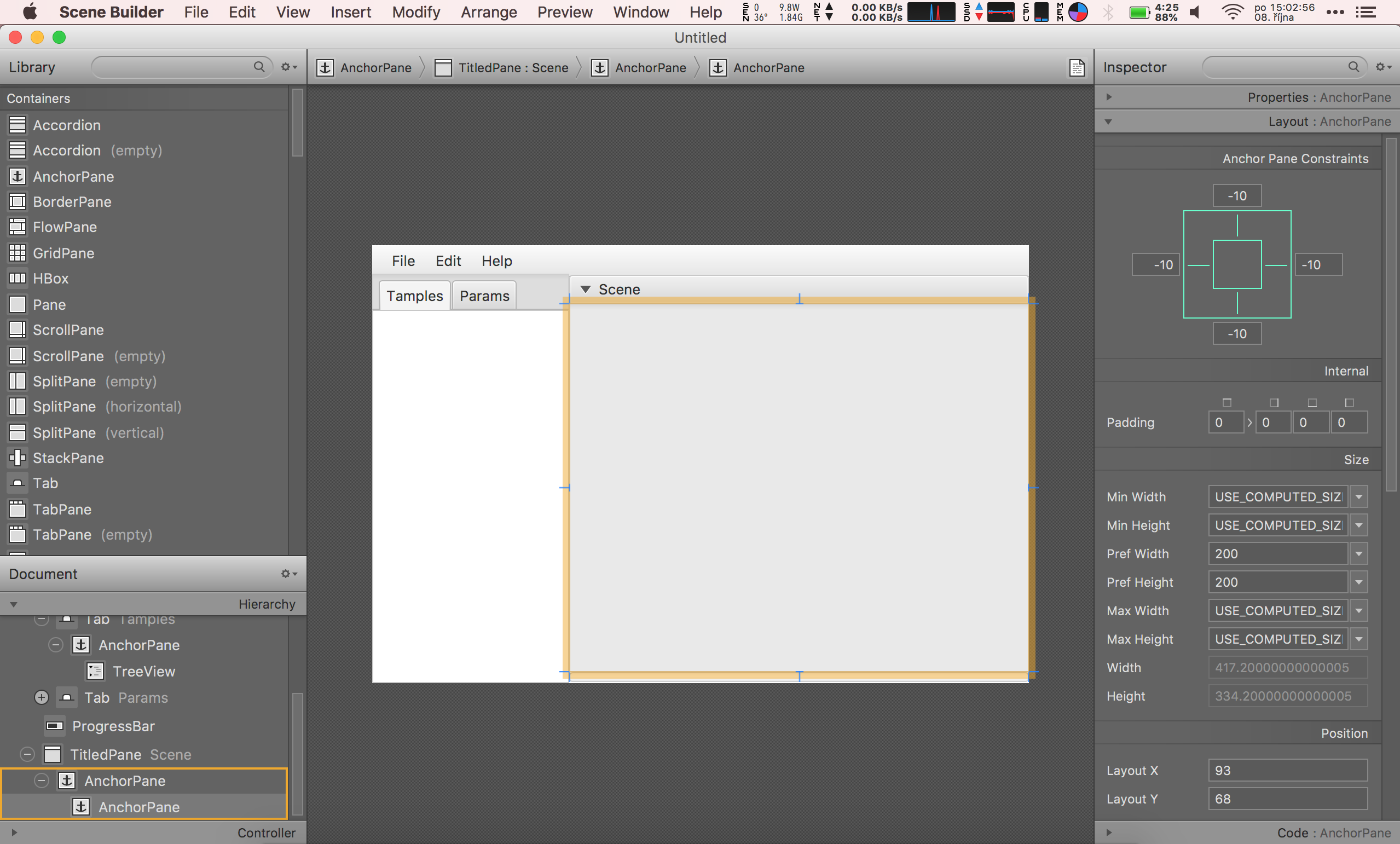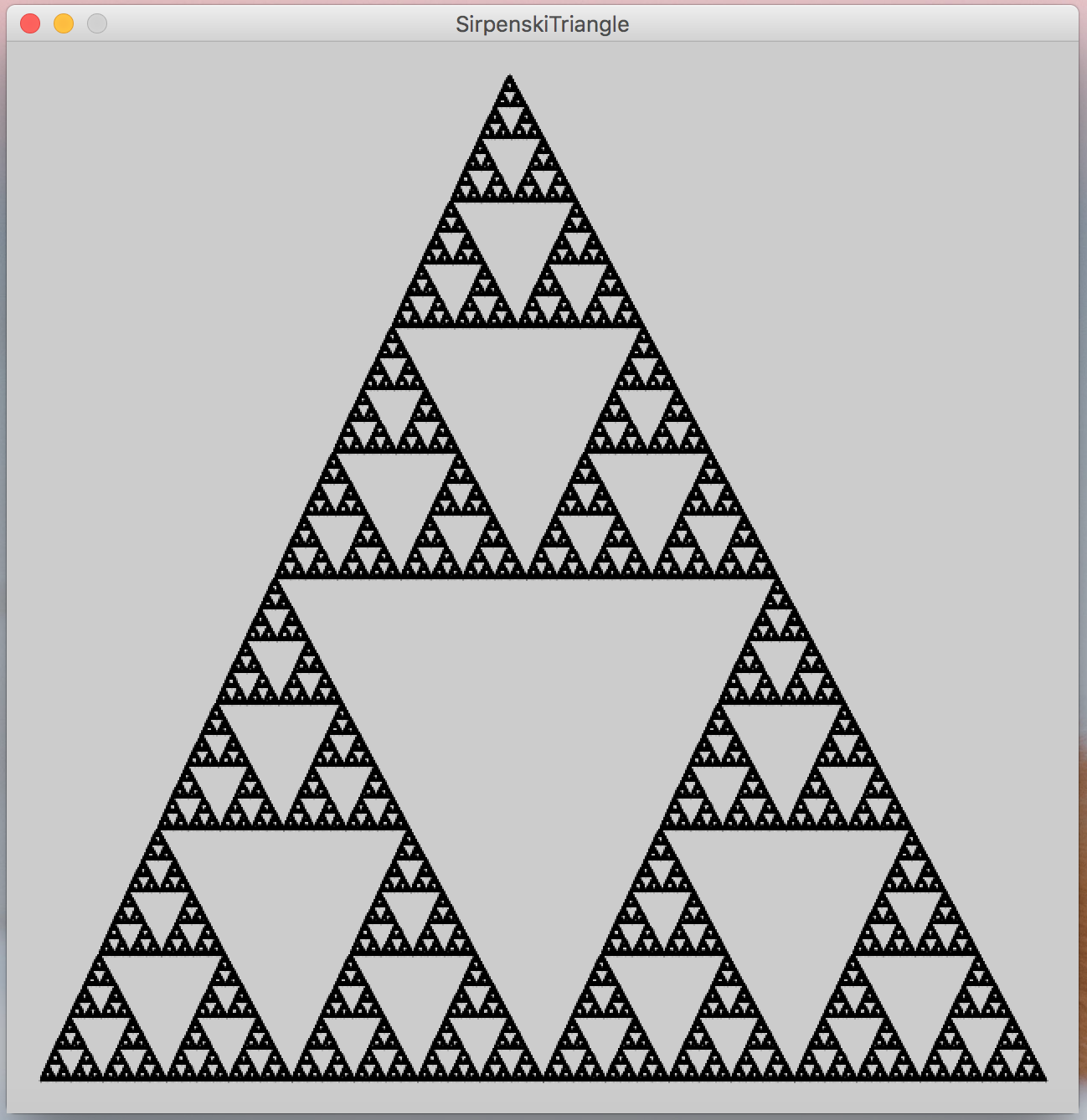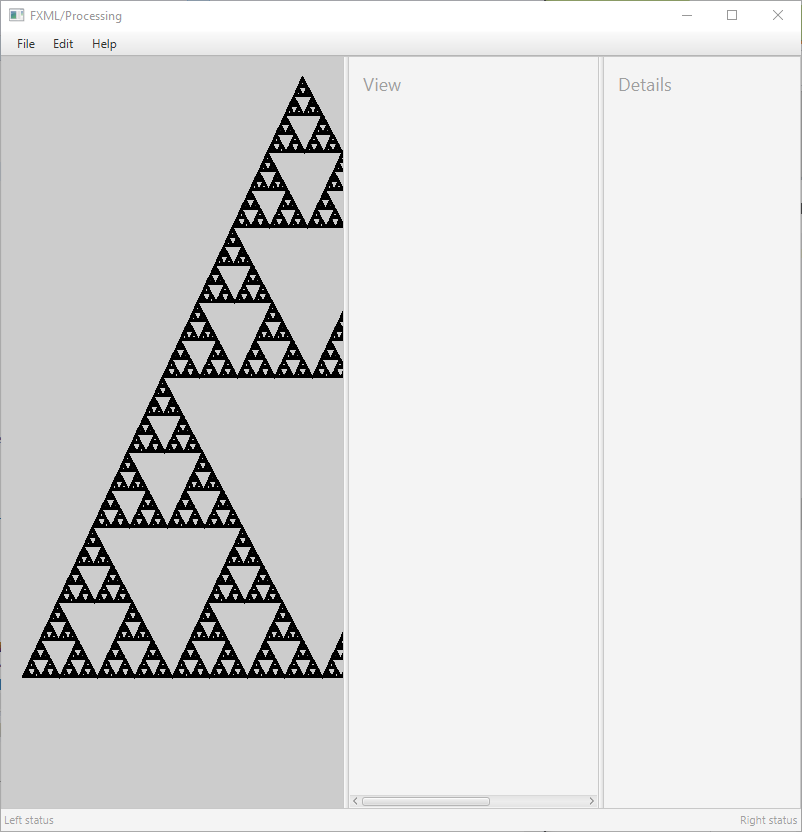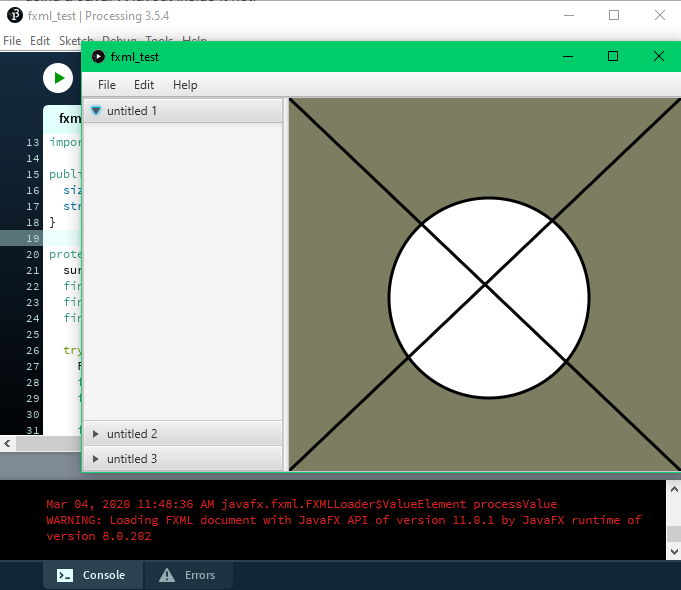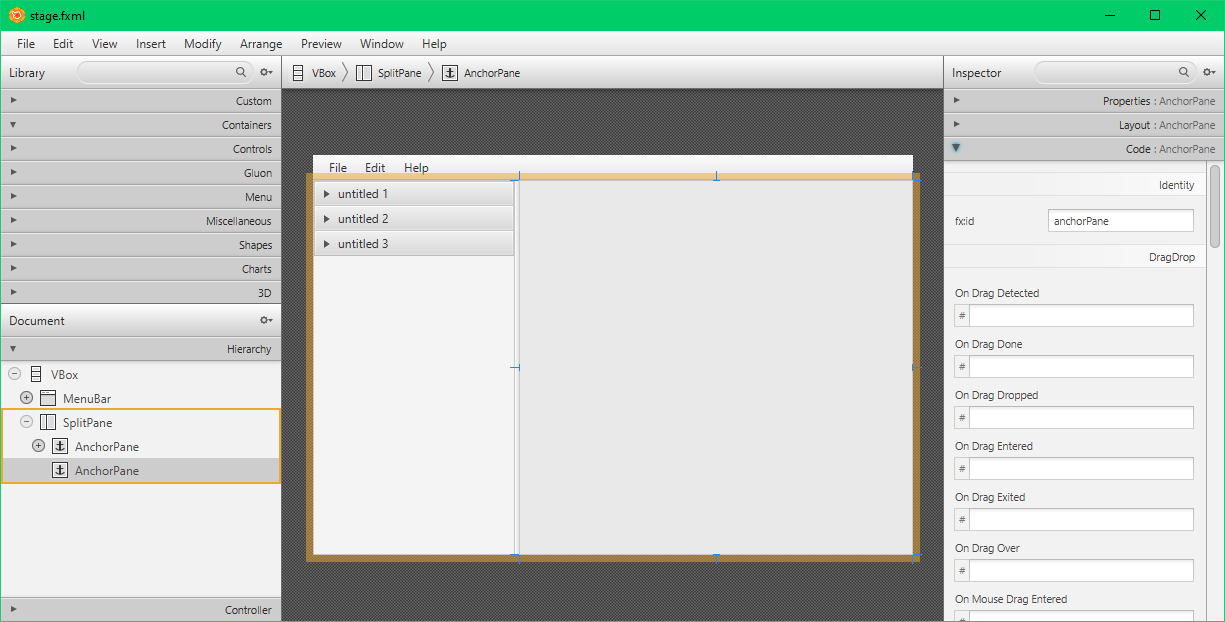I am trying to make a program for visual analyzing Fractal sets. I choose Processing 3 as drawing library and JavaFX for the user interface. There are some screenshots of the current state:
My GUI:
there is Launcher code:
import Graphics.Canvas2D;
import javafx.application.Application;
import javafx.fxml.FXMLLoader;
import javafx.scene.Parent;
import javafx.scene.Scene;
import javafx.stage.Stage;
import processing.core.PGraphics;
import java.io.IOException;
public class Launcher extends Application {
private static Stage primaryStage;
public static void main(String[] args) {
launch(args);
}
@Override
public void start(Stage primaryStage) {
Parent root = loadFXML("MainUI.fxml");
Scene scene = new Scene(root, 500, 400);
primaryStage.setTitle("Fractal Analyzer");
primaryStage.setScene(scene);
primaryStage.show();
primaryStage.setMaximized(true);
Launcher.primaryStage = primaryStage;
}
@Override
public void init() {
}
@Override
public void stop() {
System.exit(0);
}
public static Stage getPrimaryStage() {
return primaryStage;
}
public void setCanvas(Canvas2D canvas){
}
private Parent loadFXML(String path) {
try {
return FXMLLoader.load(getClass().getResource(path));
} catch (IOException e) {
e.printStackTrace();
}
System.exit(1);
return null;
}
}
Testing fractal PAplet:
There is a code of this PAplet:
package Fractal;
import processing.core.PApplet;
public class SirpenskiTriangle extends PApplet {
public static void main(String[] args) {
PApplet.main("Fractal.SirpenskiTriangle");
}
public void settings() {
size(640, 640);
smooth();
if (frame != null) {
frame.setResizable(true);
}
}
public void draw() {
drawTriangle(new Position(300, 20), new Position(620, 620), new Position(20, 620), 0);
noLoop();
scale(10f);
}
public void setup(){}
public void drawTriangle(Position top, Position right, Position left, int depth) {
if (depth > 10) return;
line(top.x, top.y, right.x, right.y);
line(right.x, right.y, left.x, left.y);
line(left.x, left.y, top.x, top.y);
drawTriangle(top, top.middleWith(right), top.middleWith(left), depth + 1);
drawTriangle(top.middleWith(left), left.middleWith(right), left, depth + 1);
drawTriangle(top.middleWith(right), right, left.middleWith(right), depth + 1);
}
class Position {
final float x;
final float y;
Position(float x, float y) {
this.x = x;
this.y = y;
}
Position middleWith(Position other) {
return new Position((x + other.x) / 2, (y + other.y) / 2);
}
}
}
Is there any way to put processing PAplet into JavaFX scene like canvas or something similar?

